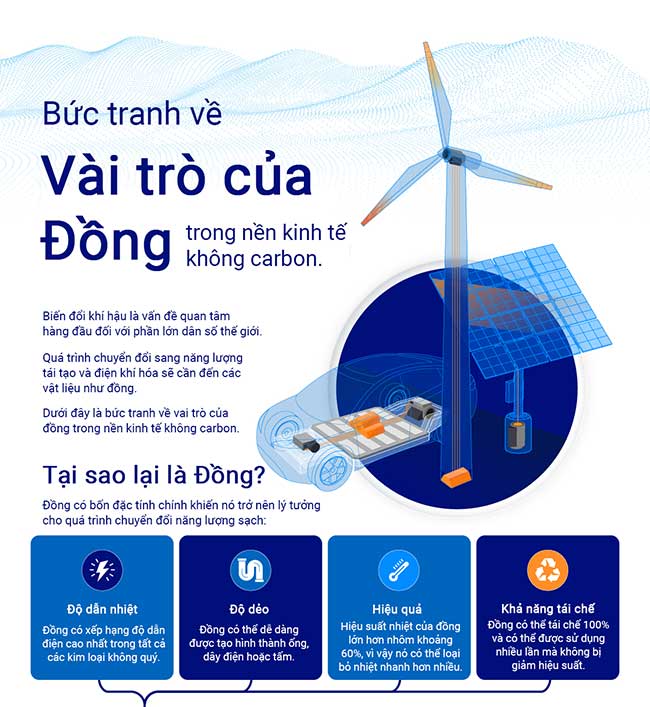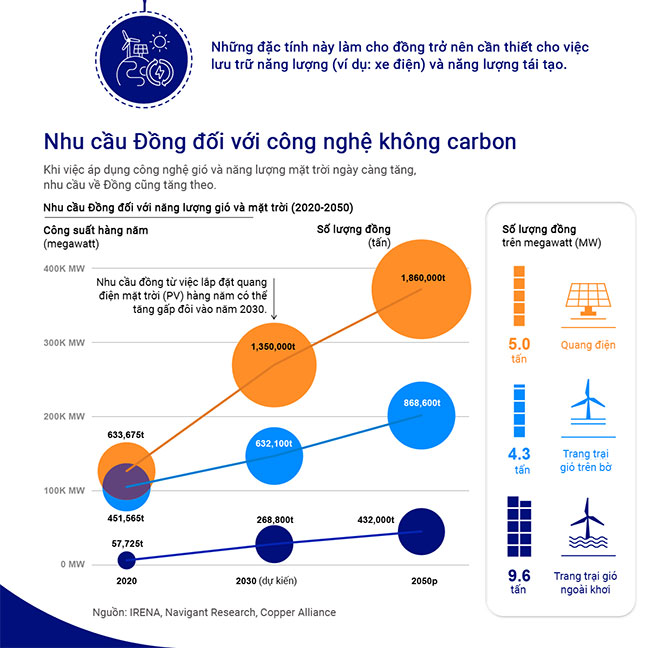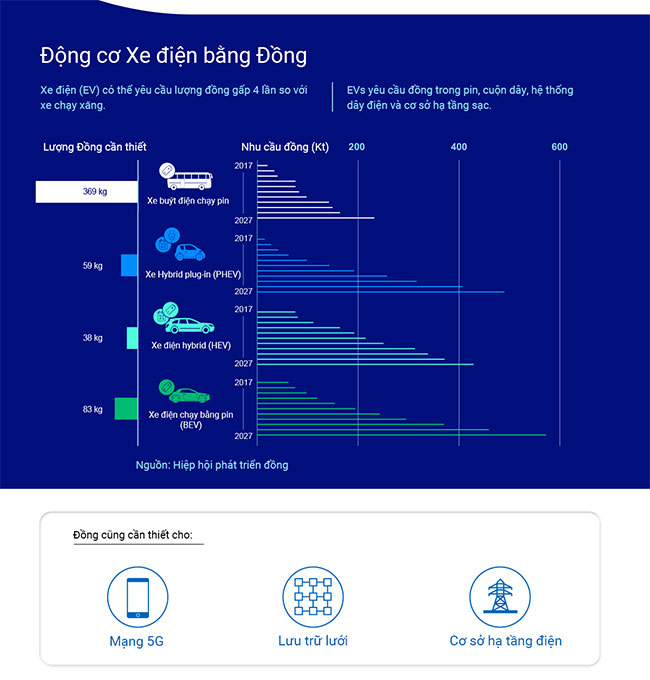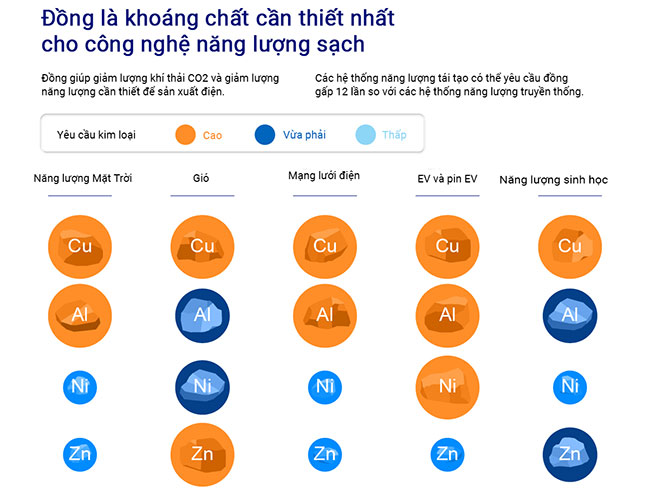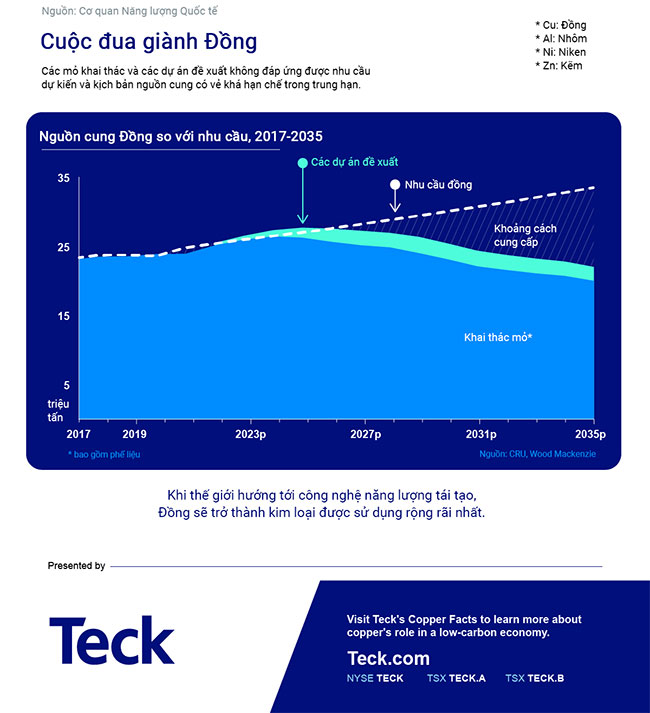Climate change is a top concern for the majority of the world’s population. The transition to renewable energy and electrification will require tons of metals, with copper being considered the most essential.
Why Copper?
Copper has been an essential material for humanity since ancient times. In fact, it is the oldest known metal, dating back over 10,000 years, and is one of the most widely used due to its versatility.
This metal has four primary characteristics that make it ideal for energy storage, powering electric vehicles (EVs), and renewable energy:
- Electrical Conductivity: Copper has the highest electrical conductivity of all non-precious metals.
- Malleability: Copper can be easily shaped into pipes, wires, or sheets.
- Efficiency: Copper’s thermal efficiency is about 60% greater than aluminum, allowing it to dissipate heat much more effectively.
- Recyclability: Copper can be 100% recycled and can be reused multiple times without losing performance.
In addition to its unique properties, copper remains relatively affordable, making it a crucial component in the energy transition.
The Foundation of the Electric Vehicle Revolution
Electric vehicles can use up to four times more copper than internal combustion engine (ICE) passenger cars. The amount increases with the size of the vehicle: a fully electric bus uses 11 to 18 times more copper than an ICE passenger vehicle. Copper is used in every major component of EVs, from motors to inverters and wiring systems.
Currently, there are very few alternatives to copper. Aluminum is the closest substitute, but although it is lighter and nearly three times cheaper, aluminum cables need to be twice the size of any equivalent copper cable to conduct the same amount of electricity.
Copper: The Most Essential Metal for Renewable Energy
Copper is a critical component for most electric-related technologies. According to the Copper Alliance, renewable energy systems may require up to 12 times more copper than traditional energy systems.
By 2050, annual copper demand from wind and solar technologies could exceed 3 million tons, or about 15% of the global copper output in 2020.
The Race for Copper
Goldman Sachs predicts that demand for copper in low-carbon technologies will rise to 5.4 million tons by 2030, up from about 1 million tons in 2021. Meanwhile, the number of operating mines and proposed projects is not meeting the anticipated demand, and the supply scenario appears quite constrained in the medium term.
